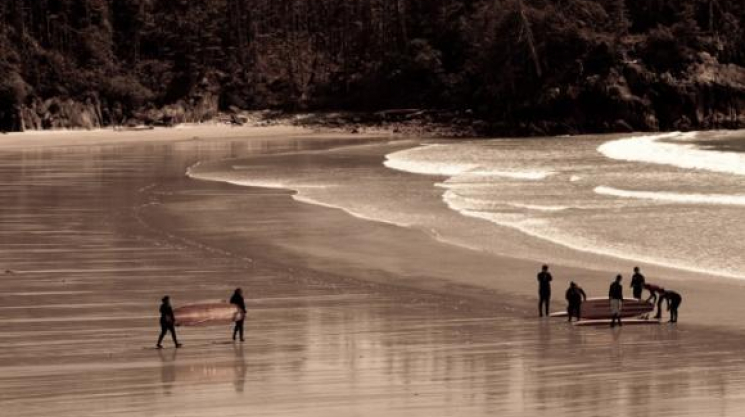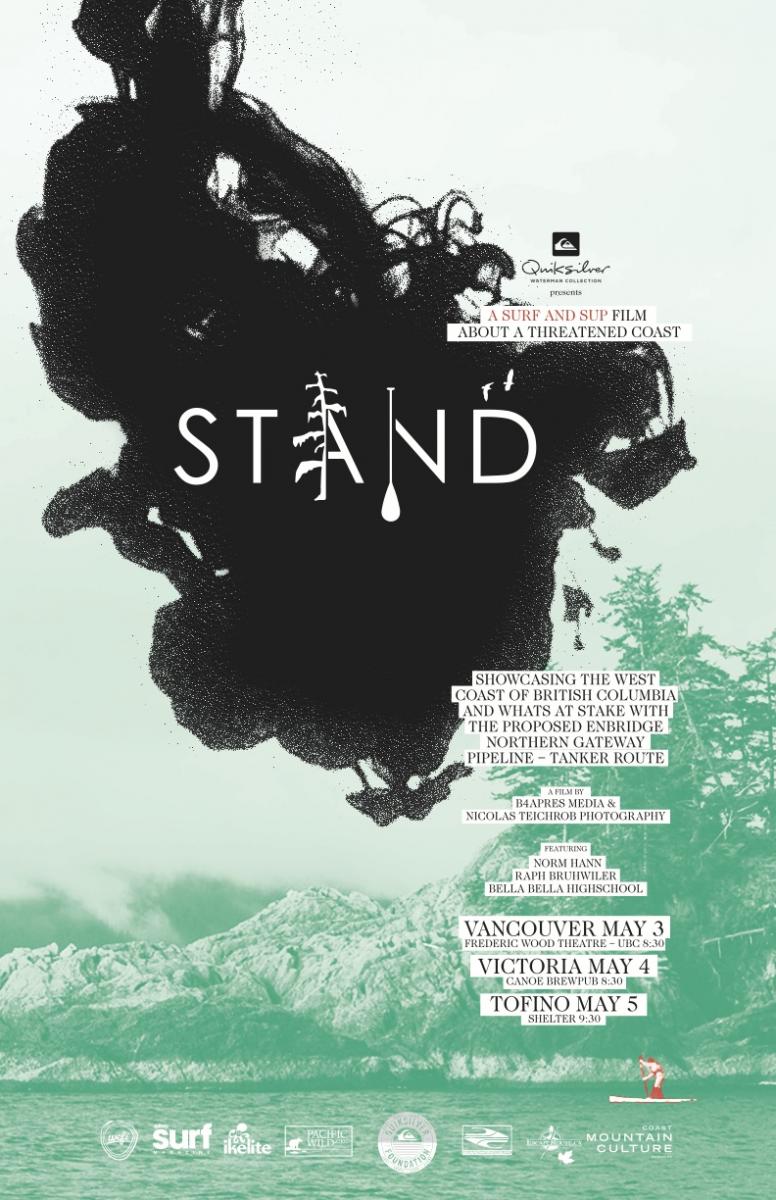
Mon, 05/06/2013 - 14:13 by Natasha Neale
As I walked into the Frederic Wood Theatre at UBC on Friday evening, there was a palpable and distinct buzz in the air, and a long circling line around the corner. People were excited, and all gathered there for a reason: a joint cause and passion. And after seeing this powerful documentary—a grass roots campaign to raise awareness and protect British Columbia's waters from Enbridge’s proposed Northern Gateway Pipeline, by B.C. filmmakers, Nicolas Teichrob and Anthony Bonello—it’s easy to see why.
In partnership with Quicksilver, STAND is is an environmental film that rallies against the potential harmful effects that business ventures evoke on natural habitats. A 50-minute documentary, Bonello and Teichrob follow paddle border, Norm Hann, as he paddles along the East Coast of Haida Gwaii, (meaning “Island of the People”) from Old Masset in the north, to SGang Gwaay, a UNESCO World Heritage site at the southern point. This 300km trip is an effort to bring awareness to all sides of the pipeline battle and follows the tanker route destined to carry diluted tar sands bitumen oil along rugged coastal shores if the pipeline is approved.
With the full support and participation from First Nations communities, Hann spent three weeks paddling this pristine part of the world to document what is at stake. With beautiful scenes, an impressive musical score, this documentary is not only well made and thought out, but also extremely important to raise awareness of the plight of the area and its people. Being not a case of if but of when there will be an oil spill on this desired pathway, livelihoods, surroundings, animals (which create $2 billions worth of industry, the same as the proposed pipeline will make, as well as live off the land and water), and the sheer awe-inspiring beauty of the place, will be destroyed, as well as huge affects on the nation’s fishing industry. The type of oil being funnelled through the area is also extremely troubling, as bitumen sinks instead of floating on the surface, making the damage devastating and irreparable. And with other ways to build the oil pipeline, one is left wondering why another solution can’t be found.
This film is informative, and heart warming. Following Hann on his journey, you can feel his passion for the cause, and also the appreciation and joint passion of the Haida. This land (part of The Great Bear Rainforest, one of the planet’s rarest forest ecosystems) has been their home for hundreds of years, and their culture, traditions and artwork are a reflection of this and the deep, spiritual connection they have to the land and waters. It’s a rare, untainted sight in the world, to live in a land so pure and beautiful, where humpback whales breach in the same waters where the people fish, surf and paddleboard themselves, amongst rich and lush rainforest, off the very shore they live on.
Part of the documentary sees Hann working with grade 11 school children, learning to build their own paddleboards and to ride in their ocean. This is one of the most powerful parts of the movie, as you see first hand the affects, dangers and worries from the young Haida community, and just how much will be changed, for the worse, if these pipelines go ahead. As one family described, the oil spills would change everything, and they are willing to fight against the big man, and die for their cause. This wouldn’t be the first time they had to fight to save their lands from industry, with the successful logging protests of 1985-86. With such a powerful industry to fight this time, it’s going to be a much harder battle.
Just watching the documentary, however well made, beautiful (there are some awesome surf shots, as well as hauntingly silent and gorgeous paddle shots, too) and informative aside, it’s awful to imagine such overpowering and dangerous oil tankers channelling through this unique region, where so much is at stake. Not only is it picturesque beyond words; it is a life source for everyone in it.






Add comment